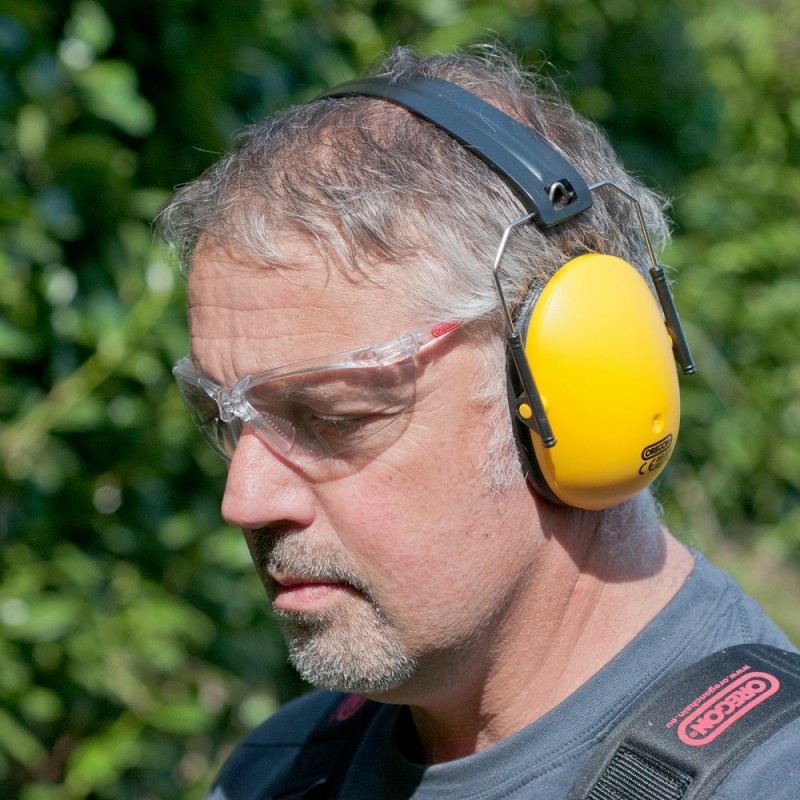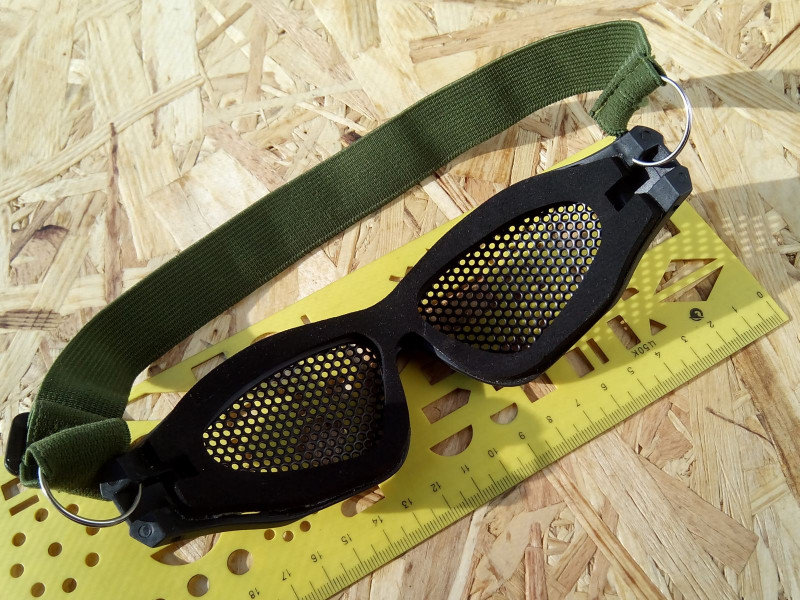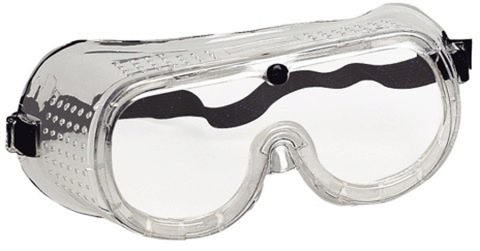Varieties of safety glasses
GOST 12.4.253-2013 established two main structural types protective glasses for work with grinders and other types of hand-held power tools: open and closed. In addition, the first type is divided into two subspecies: with and without lateral protection. Open glasses are designed to work in a dust-free environment, so the space under them is freely ventilated and they do not fog up. Side protection is designed to prevent particles flying parallel to the face of the grinder operator from entering the eyes. For better visibility during operation, this part is usually made of the same material as the front lens (see photo above).
Goggles are similar in appearance to a diving mask. They completely protect the organs of vision from dust and aggressive vapors that occur when working with a grinder on stones and plastics, but without special coatings they are prone to fogging and are less comfortable. Air enters the inner space of such glasses through special valves, which must be thoroughly cleaned after prolonged work. On the head of the grinder's operator, open glasses are held by springy bows, which, in accordance with the standards, must be adjusted in length. In addition, on some models, a hinged viewing glass is provided, which allows it to be tilted at a convenient angle during operation. Closed ones are attached to the head with an elastic band or elastic rim, the width of which, in accordance with GOST, must be at least 10 mm. In the photo below: on the left open glasses for the grinder with side protection, on the right - closed with valves.
The first problem is solved by applying a coating to the lens surface that protects against UV radiation, or by adding special stabilizing additives to polycarbonate at the stage of production. To solve the second, the outer surface of the viewing glass is covered with a protective layer of increased hardness. Safety glasses with other plastics, including the well-known plexiglass (plexiglass, acrylic resin) and cellulose acetate (CA plastic), should not be used when working with a grinder, since they have much less impact resistance. In the photo below, a shard of a grinder's cutting disc stuck in a polycarbonate lens.
Varieties and characteristics
They are distinguished by the degree of openness and transparency. The second indicator should be taken into account when work occurs with an object that is too bright or hazardous radiation. Transparency can be as low as 95% without obstructing visibility.
According to the degree of openness, glasses are:
Open - in appearance they resemble ordinary glasses or sunglasses. A cheap model, sometimes equipped with lateral corner protection (from the side of the temples), rests on the temples. They have minimal protection against small particles escaping from under the grinder, but do not prevent dust, smoke or harmful vapors from getting into the eyes.
As in the case of a regular instance, the open type must be selected on an individual basis.
It is important that the size and shape are perfect for the wearer, otherwise the glasses will constantly fall off and get in the way.
Closed is a comprehensive block against large or small particles, dust and chemical vapors. Attached to the head with a strap or a stretching rubber band. There are models that are a combination of glasses and a mask, which gives full or maximum possible face protection.
There are series without ventilation, but with a special dusting that will prevent the glasses from fogging up.When cutting or grinding hard or highly hazardous materials, the closed type is preferable, albeit more expensive.
As for ventilation, it can be direct and indirect.
The first type is the direct presence of through holes or slots in the protective equipment. It is the most economical option, and is also suitable for simple types of work no more than several times a month.
The second - valves with built-in filtration of dust, smoke and fine suspended matter. Valves are much safer than direct ventilation and are designed for maximum protection but add value to the product.
How to choose?
Before purchasing a protective mask, you should pay attention to some features. So, you need to pay attention to the degree and possibility of injury while working with a grinder
If you plan to use the instrument in more hazardous areas where chemicals are present, then it is best to buy more reliable and durable polycarbonate or polystyrene masks.
Often consumers buy in stores protective transparent masks in a standard size of 125 mm.
Before purchasing such a model, please note that it has a special steam outlet. It will allow you to work with the tool for a long time, and at the same time the glass will not fog up.
Also, don't forget to check the dimming system. Remember that the automatic light filter should respond within a fraction of a second for sudden electrical flashes.
The convenience of use
Most consumers, when choosing glasses, forget about the convenience of fit, and choose only for safety. Reasons such as: poor visibility, uncomfortable fit, glasses rub the bridge of the nose, and so on.

To solve such problems, special options are added to the glasses:

Earhooks. Needed for attaching glasses behind the ears. The material must be soft and at the same time strong in order to firmly fix the glasses on the head.

Lenses and LEDs. Lenses should not collect condensation, should not be scratched or transparent. Also, the shape of the glasses should allow replacement of lenses with newer ones. For example, if you need to change lenses to darker ones, in connection with working in a lighted room, then glasses should include this function.








































